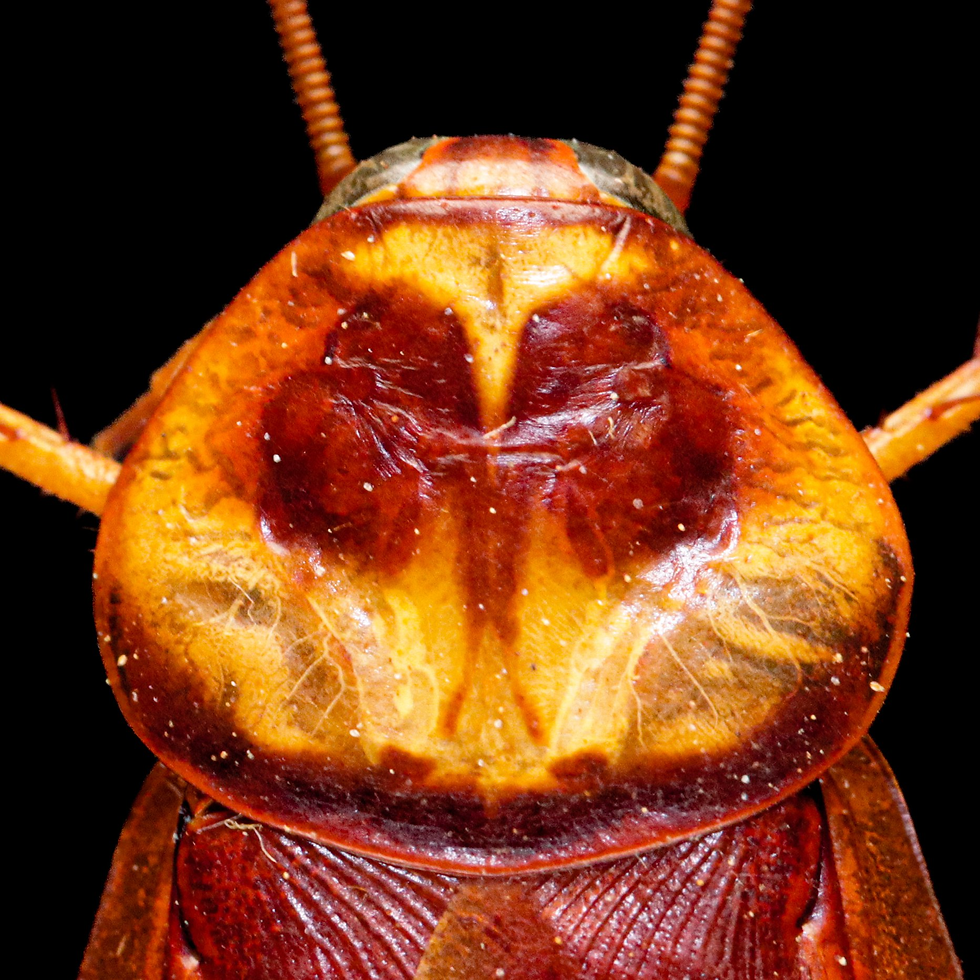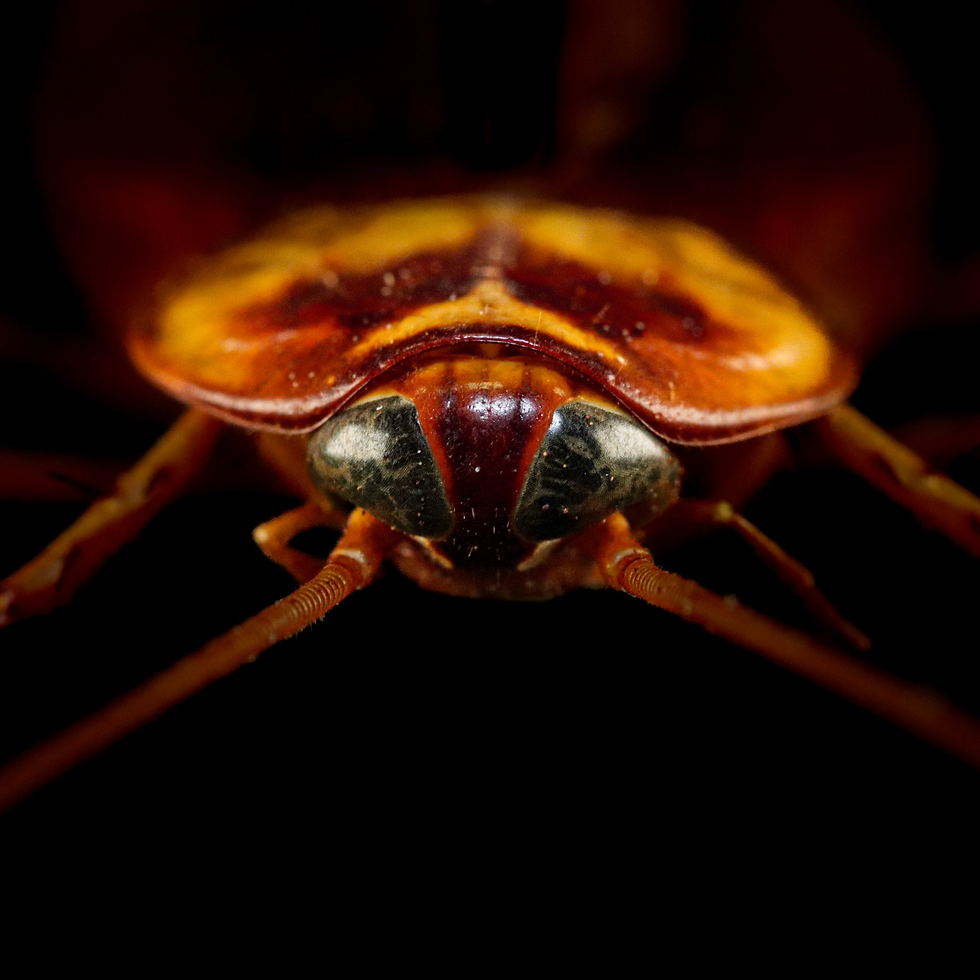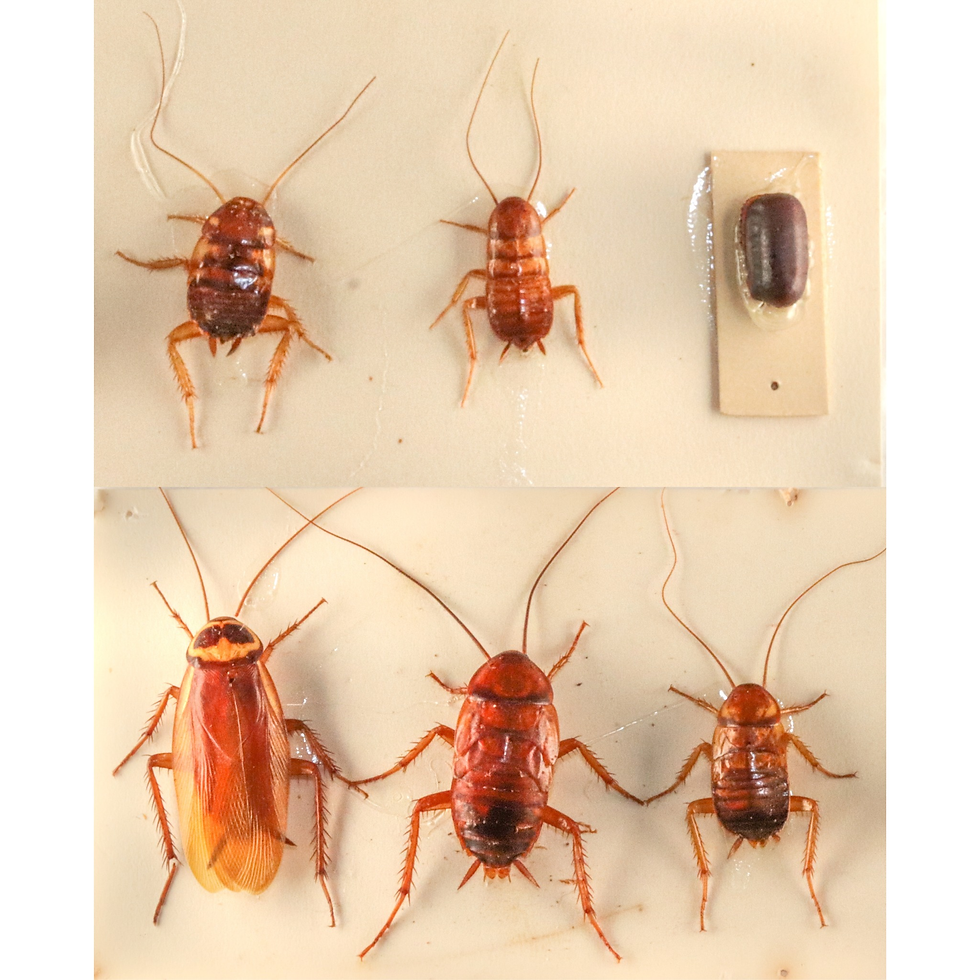Specimen Showcase | Cleaners in the Dark
- Hong Kong Biodiversity Museum
- Mar 13
- 4 min read
If the majority of insect groups are unknown to most people; for instance have you ever heard about Cecidomyiidae, Curculionidae, or Ichneumonidae to name just a few of the most species-rich and abundant insect families🐝, our protagonist of this week doesn’t need much of an introduction… but definitely deserves more credit as we will see.
The American Cockroach, 𝘗𝘦𝘳𝘪𝘱𝘭𝘢𝘯𝘦𝘵𝘢 𝘢𝘮𝘦𝘳𝘪𝘤𝘢𝘯𝘢 (Linnaeus,1758), with a length averaging 4-5 cm, is one of the largest species of cockroach frequently encountered within urban settings. Don’t be tricked by its name though as the species didn't originate from America, but from the African continent. Proof that naming a species after a particular place is not always the best idea🤔. In Hong Kong, like in so many other cities around the world, there are very good chances that you crossed paths with them either in a dark street or during an unforeseen kitchen encounter in the middle of the night🌃. But how do those insects now happen to be some of the most widespread organisms in the entire world, including here in Hong Kong?

Their journey, unfortunately, started with one of the most tragic event of humanity, the black slave trade, during which millions of men, women and children were brought from Africa to the New World. The horrendous conditions on these boats 🛶 did not stop our insect hitchhiker from crossing the oceans🐟 and spread all over the world with the trade that originated from these ports, first to America, then to other parts of the world. A classic example of a biological invasion in which the American Cockroach invaded all continents and became so common on boats that it got another name: the Ship Cockroach. Yet, only a minority of the 4600 species of cockroach have successfully established outside their native range, even within the genus 𝘗𝘦𝘳𝘪𝘱𝘭𝘢𝘯𝘦𝘵𝘢 in which just 5 of the 56 species are known as exotic species. So what makes the American Cockroach successful?

This species is omnivore and an opportunistic feeder, meaning that they not only scavenge on animal 🦗and plant material 🌱but also feed on whatever food is made available. They eat almost anything, including human-made products such as beer🍺, soap🧼, leather, starch in book bindings📚, glue, hair💇♂️, and cloth👚. Besides, they are observed eating other cockroach species or their own dead or wounded individuals. Considering its flexible diet, it is thus not surprising for this species to adapt to human habitations very well.

If your midnight kitchen encounter may not represent the highlight of your day, in other habitats, such as in forests🌲, the presence and actions of cockroaches are absolutely essential as they play a fundamental role in nutrient cycling. Cockroaches feed on leaf litter🍂, wood, and decaying organic matter, which helps break down the dead plant material. This contributes to the spread of nutrients around the forest and the redistribution of nitrogen trapped in the plants to the soil; ultimately increasing the survival and growth of trees and other plant species. Their appetite for our waste can also benefit us directly. For instance, in some countries like China, cockroach farms (yes you read well) are established to process huge amounts of urban food waste🍔 and thus reduce the pressure on landfills. As you see now, cockroaches are free cleaners in many ecosystems, including within human habitats!

American Cockroaches have developed many survival strategies through their long evolutionary history. One of them is their incredible speed or response to a threat. Indeed, they can detect even a gentle puff of wind🌀 created by a nearby moving object, or animal, and respond by running away from the wind’ source. They possess sensory cells that are sensitive to wind and connect to the nervous system as well as hairs located on the ventral surface of the cerci (a paired sensory appendage at the tip of their abdomen). When these hairs detect a puff of wind and its direction, nerve impulses are sent to the cockroaches’ leg muscles directly, which drive the cockroach to turn away from the wind stimulus💨. This is the reason why when you walk close to the cockroaches, they respond so quickly. How quick are American Cockroaches? They are capable of running at high speeds of up to 1.5 meters per second🏃, similar to a two-seat sofa 🛋or the equivalent of 50 m per second (or over 180 km/h) for a human. No wonder they can disappear under our eyes👀 and this has probably saved them from many close-shoe encounters on boats or on land.

Finally, American Cockroaches are one of the roach species that can “fly”. In summer, you may get a better chance to see flying cockroaches. Cockroaches usually do not use extra energy to fly - as flying is energy costly. However, in hot weather☀️, they get more energy from external heat with greater temperatures to fly or glide, in order to find food or mates, or to get over hot surfaces♨️ to survive. To be more accurate, the use of American cockroaches’ wings is for gliding, not flying. If you ever experienced a cockroach flying, I mean gliding, at your face it was neither to attack or scare you, but probably a failed attempt to escape. Since cockroaches are poor “flyers”, they may fly toward you accidentally or just want to get past you. So, in a sense you were lucky to witness a gliding cockroach! Because not all cockroaches can fly and when they can, they rarely do. No risk though in your next visit at the Hong Kong Biodiversity to get a gliding cockroach in your face, ours are preserved and the temperature in our museum is too cold anyway🥶; so all encounters will be controlled this time!
Text: Sofia Tam

Comments